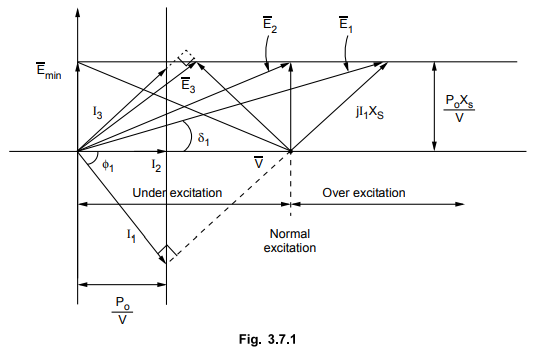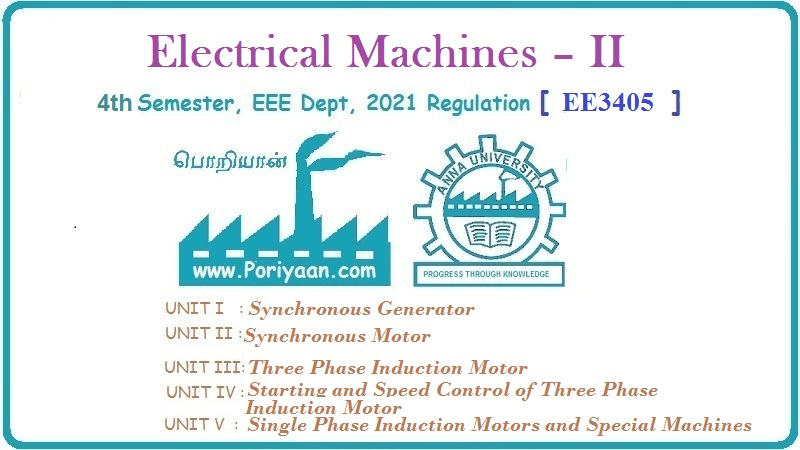Electrical Machines II: UNIT I: c. Synchronization and Parallel Operation of Alternators
Operation at Constant Load with Variable Excitation
Alternators
If the field current of the alternator is varied to change the excitation e.m.f. E, the power angle δ chrnges m such a way as to maintain E sin 8 constant.
Operation at Constant Load with Variable Excitation
Now
let us consider a generator operating at constant load.
We
have,

If
the field current of the alternator is varied to change the excitation e.m.f.
E, the power angle δ chrnges m such a way as to maintain E sin 8 constant. With
change in E, the tip of phasor ![]() moves on a line parallel to
moves on a line parallel to ![]() at a
distance E sin PoXs
/ V from it.
at a
distance E sin PoXs
/ V from it.
Also
tip of current phasor traces a line perpendicular to V at a distance of I cos
ϕ
= Po/V from the origin to make I cos constant. This is shown in the
Fig. 3.7.1.

The
current phasor I is always at an angle of 90° to phasor IXS as shown in the
Fig. 3.7.1.
The
excitation required to obtain unity power factor is known as normal excitation
while excitation above and below normal excitation is respectively known as
over and under excitation. Thus a generator supplies a lagging power factor
when over excited while a leading power factor when under excited.
As
the excitation is varied, the current and load angle is minimum for normal
excitation. Both current and load angle increases as the excitaion is changed
above or below the normal excitation. For under excitation power factor becomes
more and more leading while for over excitation power factor becomes more and
more lagging.
Review Question
1. Explain the effect of variation of excitation of a
synchronous generator connected to infinite busbar on the armature current,
power factor and load angle.
Electrical Machines II: UNIT I: c. Synchronization and Parallel Operation of Alternators : Tag: Engineering Electrical Machines - II : Alternators - Operation at Constant Load with Variable Excitation
Related Topics
Related Subjects
Electrical Machines II
EE3405 Machine 2 EM 2 4th Semester EEE Dept | 2021 Regulation | 4th Semester EEE Dept 2021 Regulation
